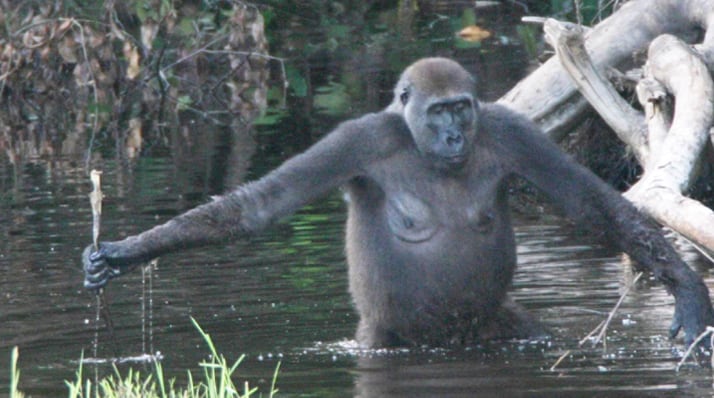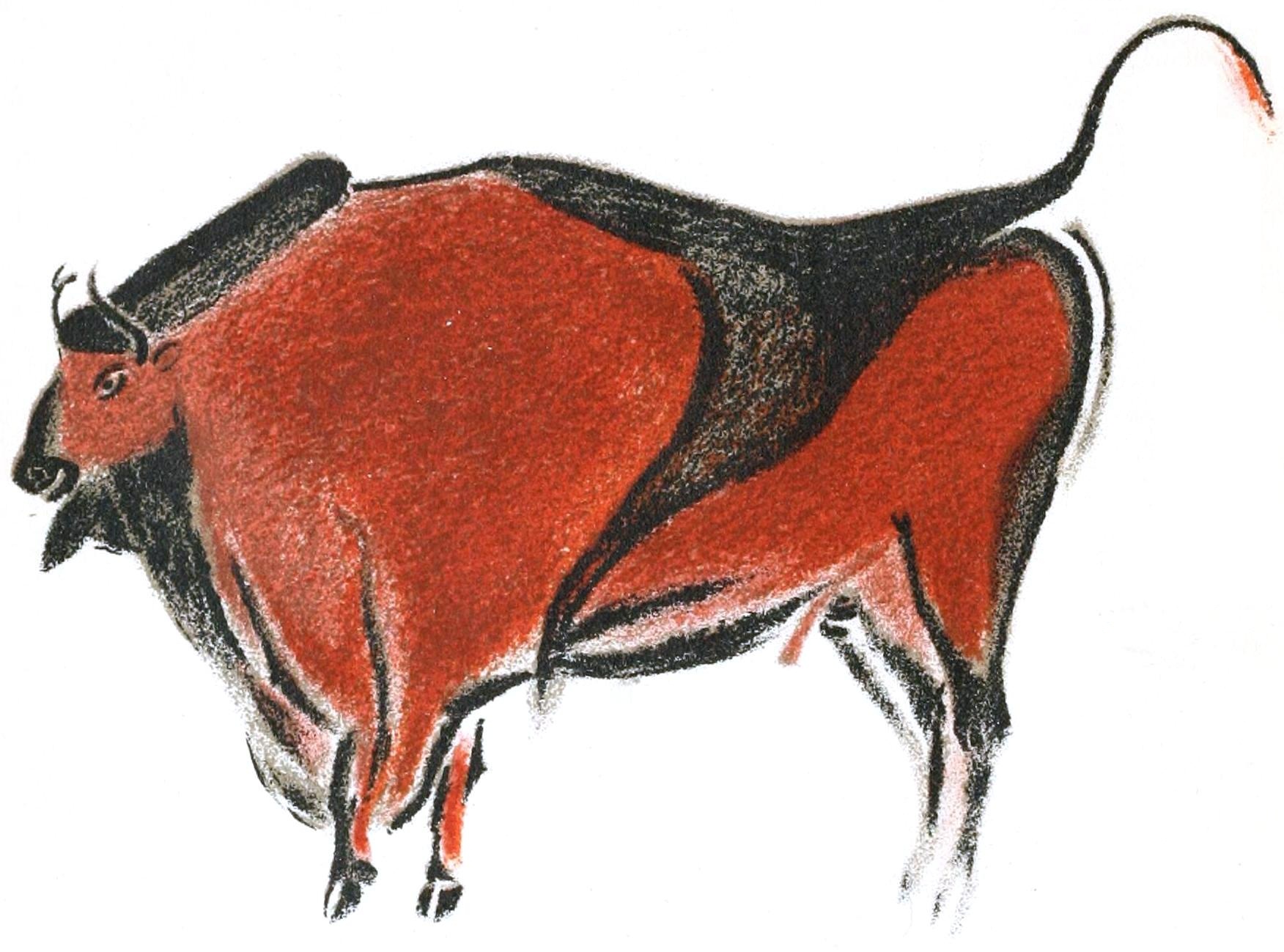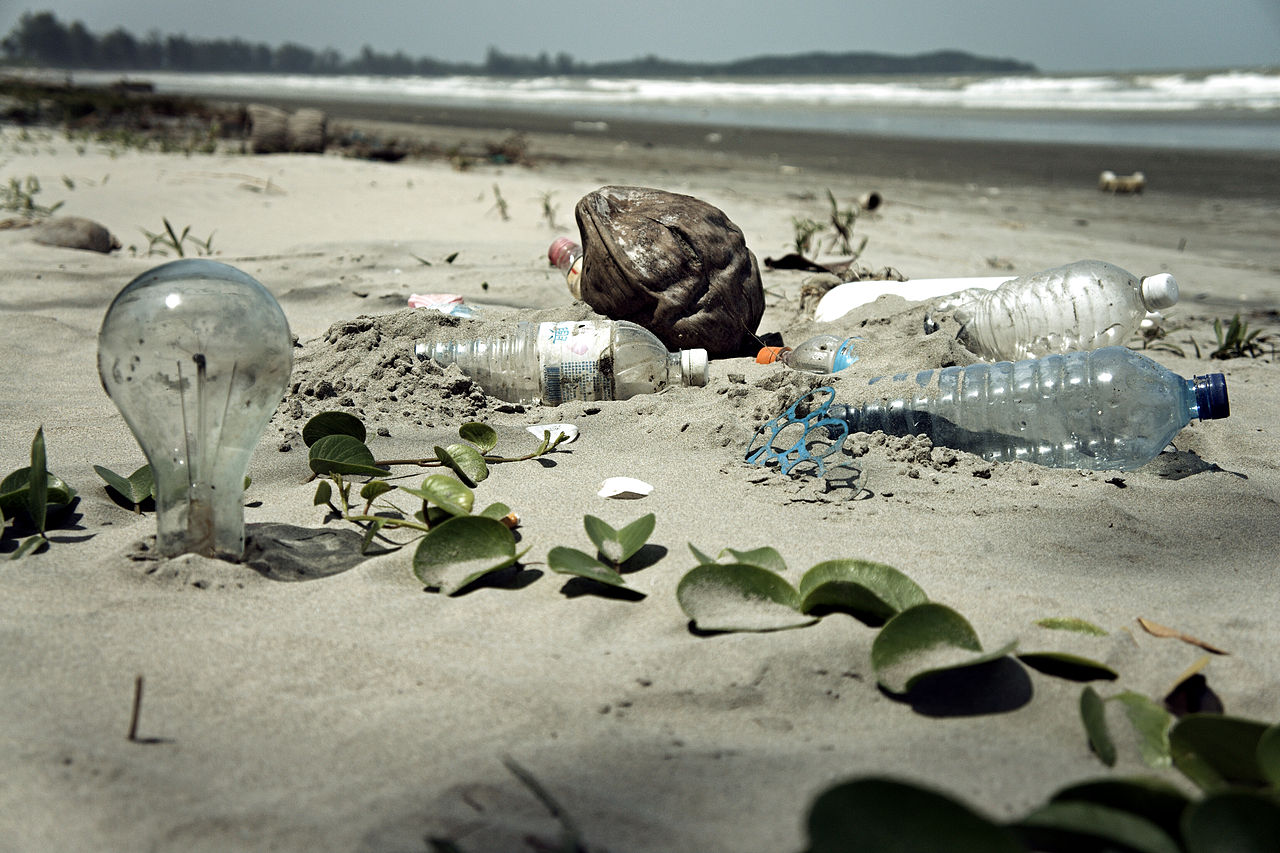Hominidae
The Hominidae, whose members are known as the great apes or hominids, are a taxonomic family of primates that includes eight extant species in four genera: Pongo (the Bornean, Sumatran and Tapanuli orangutan); Gorilla (the eastern and western gorilla); Pan (the chimpanzee and the bonobo); and Homo, of which only modern humans remain.

This adult female Western lowland gorilla from Nouabalé-Ndoki National Park, northern Congo, used a branch as a walking stick to gauge the water’s depth. This proves that gorillas use tools. As part of an ongoing study of western gorillas in Nouabalé-Ndoki National Park in the Republic of Congo, Thomas Breuer, Mireille Ndoundou-Hockemba, and Vicki Fishlock reveal that gorillas are just as resourceful as the other great apes.
From an observation platform at Mbeli Bai, a swampy forest clearing that gorillas frequently visit to forage, Breuer et al. studied an adult female gorilla named Leah (a member of a long-studied gorilla group) at the edge of a pool of water,
“looking intently at the water in front of her. Leah walked upright into the water, but stopped and returned to the edge when the water reached her waist. She then walked back into the water, grabbed a branch in front of her, detached it, and, grasping it firmly, repeatedly jabbed the water in front of her with the end of the branch, using it to test the water depth or substrate stability. She continued walking across the pool, branch in hand, using it as a walking stick for postural support.”
Great Ape Project (GAP)
The Great Ape Project (GAP) was started in 1993 and is a group of scientists, anthropologists, ethicists, and others who want a United Nations Declaration of the Rights of Great Apes. This would give basic legal rights to non-human great apes, such as chimpanzees, bonobos, gorillas, and orangutans.
The right to life, the protection of individual liberty, and the prohibition of torture are all suggested. The organization also keeps track of individual great ape activity in the United States through a census program. Once rights are established, GAP would ask for great apes to be set free from captivity. Currently, 3,100 are held in the U.S., including 1,280 in biomedical research facilities 1.
On February 28, 2007, the parliament of the Balearic Islands passed the world’s first legislation that would give great apes legal personhood rights. The resolution provoked public support for the rights of great apes across Spain. On June 25, 2008, a parliamentary committee passed resolutions urging Spain to grant the primates the right to life and liberty. If approved, “it will ban harmful experiments on apes and make keeping them for circuses, television commercials, or filming illegal under Spain’s penal code.”
The great apes do use Psilocybin fungi. However there is no specific research known at the time of writing that would explain extant great ape use of Psilocybin fungi.
Modern man
Early evidence of modern man and his practices

European bison, from a painting on the roof of the cave of Altamira, Spain
Documented evidence of the use of Psilocybin fungi.

-
Prehistoric rock arts, near Villar del Humo in Spain, suggests that Psilocybin Hispanic was used in religious rituals 6,000 years ago.
-
The hallucinogenic species of the Psilocybin genus have a history of use among the native peoples of Mesoamerica for religious communion, divination, and healing, from pre-Columbian times to the present day.
-
Mushroom stones and motifs have been found in Guatemala. A figurine dating from ca. 200 COMMON ERA, depicting a mushroom strongly resembling Psilocybe mexicana, was found in the west Mexican state of Colima in a shaft and chamber tomb.
-
A Psilocybe species known to the Aztecs as teōnanācatl (literally “divine mushroom”: agglutinative form of teōtl (god, sacred) and nanācatl (mushroom) in Nahuatl language) was reportedly served at the coronation of the Aztec ruler Moctezuma II in 1502.
-
Aztecs and Mazatecs referred to psilocybin Mushrooms as genius mushrooms, divinatory mushrooms, and wondrous mushrooms, when translated into English.
-
Bernardino de Sahagún reported the ritualistic use of teonanácatl by the Aztecs, when he travelled to Central America after the expedition of Hernán Cortés.
-
After the Spanish conquest, Catholic missionaries crusaded against the cultural tradition of the Aztecs, dismissing the Aztecs as idol worshippers, and the use of hallucinogenic plants and Mushrooms, together with other pre-Christian traditions, was violently suppressed.
-
The Spanish believed the mushroom allowed the Aztecs and others to communicate with devils. Despite this history, the use of teonanácatl has persisted in some remote areas.
-
The Vatican’s oversee in the matter of Psilocybin Mushrooms was probably the first step in making much of the western society consider that this was horrifying, despite local practice for various uses also dating back millennia.
Dysfunctional man
Societas humana hodie est prorsus mala

- At this point, we are in a state of being that can only be described as totally dysfunctional. Leaders who are simply puppets of the mega rich and corporate world are allowed to control every aspect of everything on our small planet. This is not sociologically healthy, as the 1% at the top of the pyramid are psychopathic and sociopathic monsters, even if they do not know it themselves.
- Our planet is run using a casino with loaded dice. Our supposedly democratic societies are nothing more than a farce. They were nothing more than a farce when democracy was first invented in Greece. Athens relied on slaves to perform all the work. Thus, leaving the ruling class to play the game of democracy. It was common for the same speaker to represent different sides at different times.
- As humans, we are a part of this planet, and as such, we are responsible for its condition. Despite this, we continue to allow our planet to be abused in unprecedented ways.
- The fact that there are 8 billion of us on Earth is not the cause of the problems of our way of life, such as Covid-19 plagues, wars, and the increased price of oil and electricity. Our issues are rooted in our social and economic organization.
- It is therefore not surprising that what we describe as medicine is also diseased. In the short term, pharmaceutical chemical companies make life-saving drugs. Over time, these chemicals will cause more diseases.
- This is why people are looking for alternative solutions. There are alternatives that do not cause disease.
- One would expect that a world filled with computers and robots would make life easier. Nevertheless, the racketeers at the top of the system will always find a way to turn every tool against us.
- We should turn the pyramid upside down. The mass of the population will then push the 1% and their supporters into the ground where they belong.
- I believe it is important to understand that anyone you may see who is at the top and hailed as the richest, is not running the show. This is a powerful group of people, but they must bank their money somewhere. They play the stock market and use other people’s money to gain more wealth. They are merely another component of the machine.
- I see that many people believe that they may play the casino stock market, own massive wealth, and still believe they are socialists. In reality, these are Armchair Communists, and most of them are mean, nasty, disloyal, and two faced.
- An entirely new world order is needed. However, this is not the new world order of the Bush family, but one where proactive consensus thinking and decision making is the norm. We need to educate our children to achieve this. We must educate them about politics and how decision-making is best done.

A sizable part of the problem is consumerism
A sizable part of the problem is consumerism, which only came about after World War II. Consumerism is a disease that leads to a society that uses things once and then throws them away. It creates a society in which the consumer is continually looking for something new and never happy with what he has or what he is getting.
There are people who want a global reset. Beware of their intentions, as some of them are types who would kill half the worlds’ population to save their own position in the power pyramid.
Consumers Want to Know is a 30-minute documentary on Consumers Union, which is a non-extant name of a now useless United States-based non-profit organization now called Consumer Reports. The documentary was made in 1960. Some things change and some things never change.
Copyright © 2022 Geoffrey David Cowne
FOOTNOTES
This is about as horrific as it gets. Using great apes as lab rats is no different from using humans for the same purpose. The author disagrees with using Lab Rats for consumerist product testing or any other horrific testing, for that matter.
